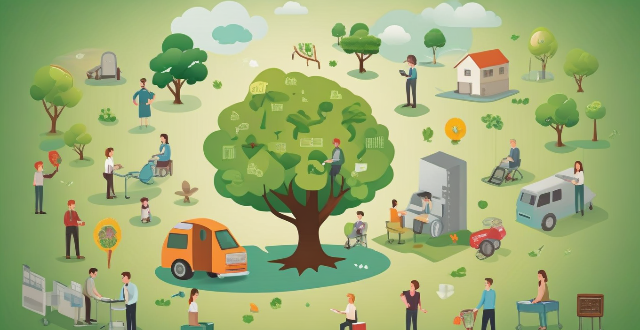To create a sustainable economy that benefits both people and the planet, several strategies must be employed. These include shifting to renewable energy sources, promoting circular economy practices, encouraging green innovations and technology, implementing sustainable agriculture practices, supporting local economies and fair trade, and raising awareness and education about sustainability. By taking these steps, we can ensure the well-being of current and future generations while minimizing waste, reducing environmental impacts, and conserving natural resources.

How Can We Create a Sustainable Economy that Benefits Both People and the Planet?
Creating a sustainable economy is crucial for the well-being of both current and future generations. A sustainable economy ensures that resources are used efficiently, waste is minimized, and environmental impacts are reduced. Here are some ways we can achieve this goal:
1. Shift to Renewable Energy Sources
Renewable energy sources like solar, wind, hydroelectric, and geothermal power are essential components of a sustainable economy. These sources produce little to no greenhouse gas emissions and have a lower environmental impact than fossil fuels. Governments and businesses should invest in renewable energy infrastructure to reduce reliance on non-renewable resources.
Advantages of Renewable Energy:
- Lower Emissions: Renewable energy sources produce fewer greenhouse gases than fossil fuels.
- Sustainability: Renewable resources are naturally replenished, making them more sustainable than non-renewable resources.
- Energy Independence: Countries can become less dependent on foreign oil by using their own renewable resources.
2. Promote Circular Economy Practices
A circular economy is an economic model designed to keep resources in use for as long as possible. It aims to reduce waste by reusing materials, recycling products, and minimizing resource consumption. This approach can help conserve natural resources and reduce pollution.
Key Elements of Circular Economy:
- Reduce: Minimize resource consumption by designing products with less material or using digital alternatives.
- Reuse: Encourage the reuse of products through sharing platforms or secondhand markets.
- Recycle: Implement effective recycling programs to recover materials from waste streams.
- Repurpose: Find new uses for discarded items or transform them into something valuable.
3. Encourage Green Innovations and Technology
Investing in green technologies can lead to breakthroughs in energy efficiency, waste reduction, and sustainable production methods. Innovations like electric vehicles, smart grids, and green building techniques can significantly reduce environmental impact while creating new jobs and industries.
Examples of Green Technologies:
- Electric Vehicles: Silent, zero-emission transportation options powered by renewable energy sources.
- Smart Grids: Advanced electrical grids that optimize energy distribution and integrate renewable sources effectively.
- Green Building Techniques: Methods that improve energy efficiency in buildings through better insulation, solar panels, and other eco-friendly designs.
4. Implement Sustainable Agriculture Practices
Sustainable agriculture focuses on producing food without degrading the environment or using practices that harm human health. This includes organic farming, permaculture, and regenerative agriculture techniques that prioritize soil health and biodiversity.
Benefits of Sustainable Agriculture:
- Soil Health: Maintaining healthy soil supports plant growth and reduces erosion.
- Biodiversity: Promoting diverse ecosystems helps control pests naturally and supports pollinators.
- Water Conservation: Practices like drip irrigation save water compared to traditional farming methods.
5. Support Local Economies and Fair Trade
Local economies often have smaller carbon footprints because goods don't need to travel far distances. Supporting local businesses also strengthens communities and creates jobs. Additionally, fair trade practices ensure that producers receive fair wages for their work, which helps lift people out of poverty and promotes social equity.
Importance of Local Economies and Fair Trade:
- Reduced Carbon Footprint: Shorter supply chains mean fewer emissions from transportation.
- Community Development: Investing in local businesses boosts the local economy and fosters community spirit.
- Fair Wages: Ensuring fair trade protects workers' rights and prevents exploitation.
6. Raise Awareness and Education about Sustainability
Educating people about sustainability is essential for creating a collective effort towards a sustainable future. Schools, universities, and community programs should incorporate sustainability education into their curriculum to inspire future generations to take action.
Roles of Education in Sustainability:
- Informed Decisions: Educated individuals are more likely to make informed choices that benefit the environment.
- Behavior Change: Raising awareness can lead to changes in daily habits, such as reducing waste or conserving energy.
- Advocacy: An educated public can advocate for policies and practices that support sustainability.
In conclusion, creating a sustainable economy requires a multifaceted approach involving government policies, business practices, technological innovations, and individual actions. By embracing these strategies, we can build an economy that not only meets our current needs but also safeguards the planet for future generations.